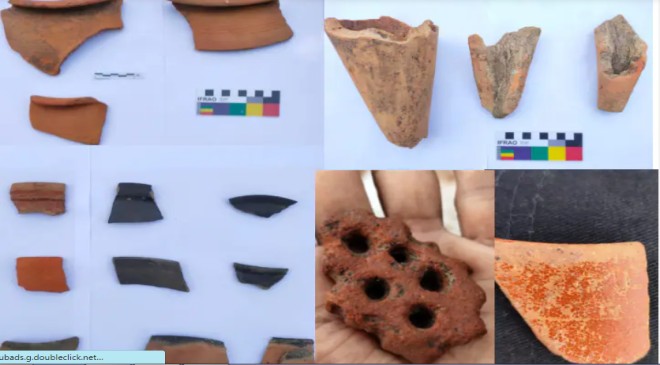With the findings, the team said, it could be concluded that the region was initially occupied by people in the Iron Age and was occupied for a long time during the Early Historic period.
Chennai: An excavation at Nerumbur village in Chengalpattu district by students of Archaeology Department in Madras University has thrown light on the way people occupied the region during the Iron age and how the region served as a transit city during the early historic and medieval period.
In a press release, the University said, the students during the excavation recovered black and red potsherds, broken pieces of pottery identified as conical jars, amphora, roulette ware potsherds, terracotta figurine pieces, hopscotch, grinding wheel, glass and quartz beads and few iron, copper and aluminum items.
Based on the artifacts and the excavation, the Head of Department Soundararajan said, “It could be concluded that this site was initially occupied by people in the Iron Age, and was occupied for a long time during the Early Historic period. Potsherds from the Early Medieval period, and imitated varieties of amphorae, were found in the upper levels of the trench,”
The cultural deposits in the region, including the black and redware amphorae from Early Medieval period, found in a way that it hasn’t been found anywhere else in India indicate that people from the Early Medieval period too occupied the site, he said.
Further, he said, the findings show that from 7th century onwards the areas were under the rule of Pallavas, Cholas and Pandyas and then under Vijayanagar rulers during and after the medieval period by their representatives.
The Pallava inscriptions found in the temple amply record that their presence was there in this area on both sides of the Palar River, he ended.





































